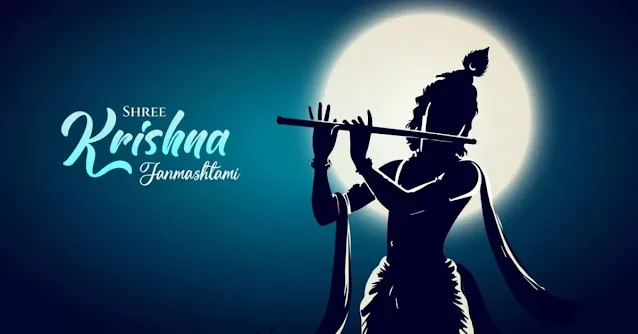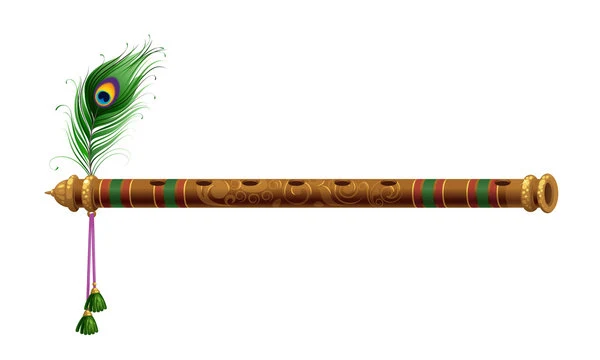Krishna Janmashtami, a vibrant Hindu festival, commemorates the birth of Lord Krishna, the eighth avatar of Vishnu. This joyous occasion is celebrated with great enthusiasm and devotion across India. Let's delve into the traditions, rituals, and festivities surrounding this auspicious day.
The Significance of Krishna Janmashtami
Krishna Janmashtami is a celebration of divine love, courage, and compassion. Lord Krishna is revered as a symbol of divine childhood, mischief, and wisdom. His teachings and stories from the Bhagavad Gita continue to inspire millions worldwide.
The Preparations and Rituals
The preparations for Krishna Janmashtami begin weeks in advance. Devotees decorate their homes and temples with flowers, lights, and colorful banners. A special altar, known as a jhula, is created to cradle the image of the infant Krishna.
On the day of Janmashtami, devotees observe a fast, breaking it only after midnight when Lord Krishna is believed to have been born. The midnight hour is marked by joyful celebrations, including singing bhajans, dancing, and offering prayers.
The Sweet Offerings: Prasad
No celebration is complete without delicious food. Prasad, the sacred offering to Lord Krishna, is an integral part of Janmashtami. Popular prasad items include:
- Makhan Mishri: A sweet delicacy made with butter and sugar.
- Panjiri: A mixture of nuts, spices, and jaggery.
- Kheer: A rice pudding made with milk, sugar, and cardamom.
- Malai Panjiri: A rich and creamy dessert made with milk, sugar, and nuts.
Makhan Mishri Recipe:
- Ingredients: 1 cup unsalted butter, 1 cup powdered sugar, 1 teaspoon cardamom powder
- Instructions: Melt the butter in a saucepan. Add powdered sugar and cardamom powder. Stir until well combined. Pour the mixture into a greased dish and let it cool. Cut into squares and serve.
Popular Chants and Songs
Janmashtami is filled with the melodious sounds of devotional songs and chants. Some popular ones include:
- Hare Krishna Hare Krishna Krishna Krishna Hare Hare: A well-known mantra chanted by devotees of Krishna.
- Govinda Govinda: A popular song praising the Lord.
- Aarti: A devotional hymn sung as an offering to Lord Krishna.
Popular Temples to Visit on Janmashtami
- Dwarkadhish Temple, Dwarka: One of the most sacred temples dedicated to Lord Krishna.
- ISKCON Temples: International Society for Krishna Consciousness temples worldwide.
- Banke Bihari Temple, Vrindavan: A famous temple known for its unique darshan rituals.
Celebrating Krishna Janmashtami Today
Janmashtami continues to be celebrated with great fervor and devotion in modern times. People of all ages come together to celebrate the birth of the divine child and to seek blessings from Lord Krishna.
The Timeless Lessons of Lord Krishna: A Glimpse into His Life and Symbols
Lord Krishna, one of the most beloved deities in Hinduism, is revered for his divine wisdom, captivating stories, and profound teachings. His life and symbols offer invaluable lessons that can guide us on our spiritual journey.
Key Lessons from the Life of Lord Krishna
- Divine Love and Compassion: Krishna's interactions with his devotees, particularly the gopis of Vrindavan, exemplify the power of divine love and compassion. His unconditional affection and guidance serve as an inspiration for all.
- Dharma and Duty: Krishna's teachings in the Bhagavad Gita emphasize the importance of fulfilling one's duty (dharma) without attachment to the fruits of action. This principle is central to leading a righteous and fulfilling life.
- Courage and Bravery: Krishna's unwavering courage and bravery in the face of adversity, as exemplified in the Kurukshetra War, inspire us to overcome challenges and stand up for what is right.
- Wisdom and Enlightenment: Krishna's divine wisdom, as revealed in the Bhagavad Gita, provides profound insights into the nature of existence, the soul, and the path to spiritual liberation.
The Significance of Krishna's Symbols
- The Flute: Krishna's flute is a symbol of divine attraction and the enchanting power of his music. It represents the call of the divine that draws us towards spiritual awakening.
- The Peacock Feather: The peacock feather adorning Krishna's crown symbolizes beauty, grace, and knowledge. It reminds us to cultivate these qualities in our own lives.
- The Sudarshan Chakra: Krishna's discus, the Sudarshan Chakra, is a symbol of divine power, protection, and righteousness. It represents the ability to overcome obstacles and maintain dharma.
- The Butter Pot: Krishna's playful antics as a child, stealing butter from the gopis, symbolize the divine's playful nature and the joy of spiritual experience.
Embracing the Teachings of Lord Krishna
By studying and reflecting on the life and teachings of Lord Krishna, we can gain valuable insights into our own lives and the path to spiritual growth. His wisdom continues to inspire and guide millions of people around the world.















